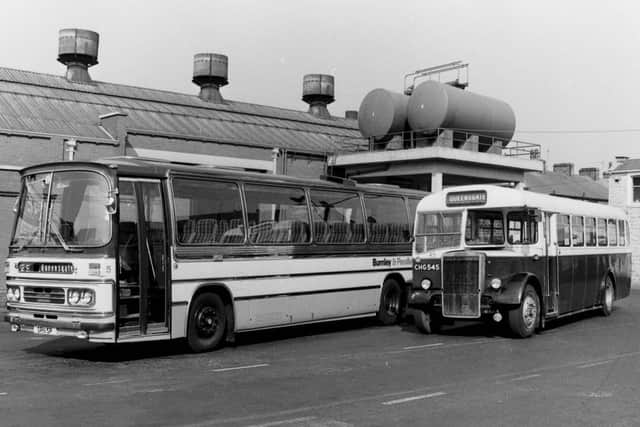From the Burnley Express Archive: Out with the old and in with the new
and live on Freeview channel 276
The location was the Queensgate Bus Depot on Colne Road, in Burnley, and the article was about the disposal of the last of the Leyland PS2/14s. The coachbuilders for this were East Lancashire, of Blackburn, and the bus is marked number 45. The replacement vehicle was also a Leyland, a PSU3D/4R, but the coachbuilding was by Duple.
I had a long-held affection for the Leyland PS2/14s because they often served on the now defunct Harle Syke to Nelson route. They had arrived in the Burnley, Colne and Nelson fleet, in 1954, when I was six years old. The second batch of eight single-deckers, of which 45, the vehicle on the right, mostly lasted until the early 1970s but two of the buses were still in the fleet as late as 1982.
Advertisement
Hide AdAdvertisement
Hide AdLiving in Briercliffe, we often went to Nelson, sometimes to church, at St Joseph’s, on Macleod Street, and later it was a PS2/14 which took me to school at St Theodore’s, though I usually went by the double-decker, as I described last week.


As you can see, the headline was appropriate. Both buses were single-deckers but the old Leyland had its engine up front whilst the new one had its at the rear. The older bus was originally rear entry, and carried a conductor, but the PS2/14s were converted to front-entry which meant, of course, that conductors were dispensed with.
I recall my father saying that, as BCN had got rid of the conductors, the prices, for passengers, should have come down, but, of course, they didn’t. Conductors, with humorous comments, often made a journey memorable and, somehow, I always felt safer on a bus with a conductor.
The more modern bus, on the left, is the Leyland PSU3D/4R. Most of BCN’s buses were made by the Lancashire firm of Leyland and many of them were by the coachbuilders, East Lancashire, of Blackburn, but Duple, though they were not entirely new to BCN, was something different.
Advertisement
Hide AdAdvertisement
Hide AdThe firm was founded in 1919 by Herbert White in Hornsey, north London. Before the First World War, they had made the Bifort car, in Fareham, Hampshire. In 1926, Duple opened a new factory in Hendon, which is also in north London.
Some of you will associate Duple with Blackpool but they only acquired H. V. Bellingham’s, which had premises in that town, in 1960. It was not until 1962 that the Duple name was used for coachbuilding in Blackpool. The name was changed to Duple Motor Bodies at this time and, from 1968, all Duple coachbuilding was concentrated in Blackpool.
The Hendon factory closed in 1970, when I was a student at London University, something I recall from those days. Duple had been a successful bus and coachbuilder for a number of years but it was, eventually, sold to the Hestair Group, in 1983 and, only six years later, a management buyout resulted in rivals, Plaxton’s, taking control.
Few buses are British made today. East Lancashire Coachbuilders, for example, now no longer exist but a successor company, Optare, I think still survives in Northern Ireland.